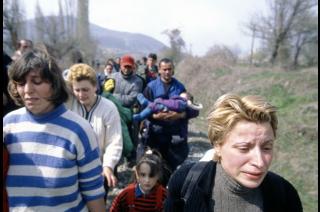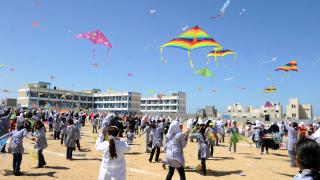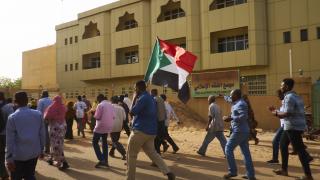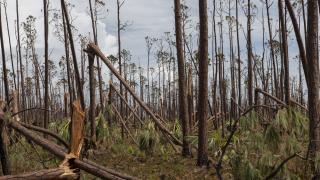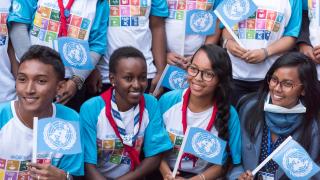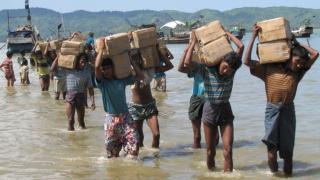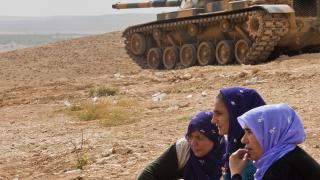What is the Responsibility to Protect?
The Responsibility to Protect is a concept whose time has come. For too many millions of victims, it should have come much earlier.
- Ban Ki-moon, Secretary-General, United Nations
Around the globe, thousands of people continue to live without the most fundamental of human rights – safety and security. The lessons of Syria, Somalia, Sudan, Rwanda and Bosnia demonstrate that the international community lacks defined international legal measures and. often, the political will to prevent mass atrocity crimes from taking place, or to stop them if preventive actions fail.
The Responsibility to Protect (R2P) is an emerging international security and human rights norm which seeks to enhance the state’s ability to protect civilians from four mass atrocity crimes: genocide, crimes against humanity, ethnic cleansing and war crimes. The central tenet of R2P is that sovereignty, the defining feature of a state, entails responsibilities as well as physical and political jurisdiction. The state may have the right to manage affairs within its borders, but it also has the fundamental responsibility of shielding populations within those borders from these four crimes.
At the 2005 United Nations World Summit, world leaders came together in historic agreement to unanimously endorse R2P, acknowledging that state sovereignty entails a responsibility to protect populations from mass atrocity crimes. R2P is conventionally understood to have three aspects, or "pillars", each with differing levels of responsibility:
- Pillar I emphasises a state’s obligations to protect all populations within its own borders;
- Pillar II outlines the international community’s role in helping states to fulfil this obligation;
- Pillar III identifies the international community’s responsibility to use appropriate diplomatic, humanitarian, peaceful or coercive means to protect civilian populations where a state manifestly fails to uphold its obligations.
Since the endorsement of R2P in 2005, the application of the concept has received mixed responses from Member States. Most accept the fundamental idea behind the norm, but have operational concerns about its possible misuse, and are especially uncertain when the question of military intervention comes into play, a component of the third pillar. The aftermath of the intervention in Libya has reinforced much of the uncertainty around R2P’s parameters, and contributed to the division within the UN Security Council on the continuing crisis in Syria.
Why is there so much controversy surrounding the Responsibility to Protect?
The main point of discord regarding R2P is associated with a particular aspect of Pillar III: using coercive force to protect civilians. Although this is only one of many different policies in this Pillar, it receives much attention, and is most commonly misunderstood to equate to “humanitarian intervention”. The legitimate use of military force has a number of limitations: it must have a just cause, which means that a state has to be manifestly failing to uphold its responsibility to protect civilians from mass atrocity crimes in order for the use of force to be justified; it must be properly authorised by the Security Council; it should only be used once all available non-violent options have been exhausted; incur as little violence as possible; do more good than harm; and have a reasonable chance of success.
It is difficult, however, for the United Nations Security Council to agree on these limitations in practice – at what point have all non-violent options been considered? If military action is sanctioned, what are the parameters that will define when and how force may be used? There is no formula to predict the horrors of genocide, which means that a response cannot simply be a list of things to do: it must be tailored to each individual case. Of course, prevention is always the best policy, and the R2P stresses the importance of early monitoring and assessment of countries at risk, as the international community should act before military force is necessary. As the genocide in Rwanda demonstrated all too clearly, timing is everything, and often, the earlier the international community acts decisively, the better.
The world has embraced the responsibility to protect - not because it is easy, but because it is right to protect populations at risk of genocide and mass atrocity crimes.
- Asha-Rose Migiro, Former Deputy Secretary-General, United Nations
How can we help to prevent mass atrocity crimes?
The UK government can support the work of the UN in a large variety of ways, from supporting institution building and development assistance in countries at risk, to providing guidance and encouragement on ensuring equality in public institutions, to preventive diplomacy and mediation, economic sanctions, and finally, military force, both non-coercive and coercive. Although the majority of the policy tools available are non-violent, persuasive prevention needs to be backed up by a credible threat of decisive action if it is to have any sway on governments unwilling to protect or actively seeking to harm populations within its national sphere.
UNA-UK’s R2P Programme – funded by the Joseph Rowntree Charitable Trust – seeks to galvanise political support for R2P and foster understanding of the concept within the public domain. It aims to do this in four ways:
- Consolidate a national R2P policy support network in the UK
- Build support for R2P within the UK Government, national and regional political parties
- Establish greater international political constituency for R2P
- Foster grassroots support in the UK.
The first year of the programme will culminate in the publication of a number of policy reports aimed at decision makers, as well as high-level round-tables bringing together policy makers and policy informers to discuss the practical implementation of the concept. At the grassroots level, UNA-UK will engage the public on the debates surrounding the R2P principle, providing lectures throughout the country, and utilise its website and social media platforms to interact with people of all ages around the UK in discussions on preventing mass atrocity crimes. Through such activities, UNA-UK will seek to place R2P firmly on the country’s political agenda.
We have to keep working on the educational side, and that’s an area where UNA-UK can be enormously helpful: explaining to the public and the media what R2P is about and, more importantly, what it’s not about. R2P is not humanitarian intervention; it’s not the old idea of sending in the marines in every situation…it’s about recognising that these kinds of crimes are a blot on the history of the 21st century and are simply not acceptable anymore.
- Dr Ed Luck, former Special Advisor to the UN Secretary General on the Responsibility to Protect

